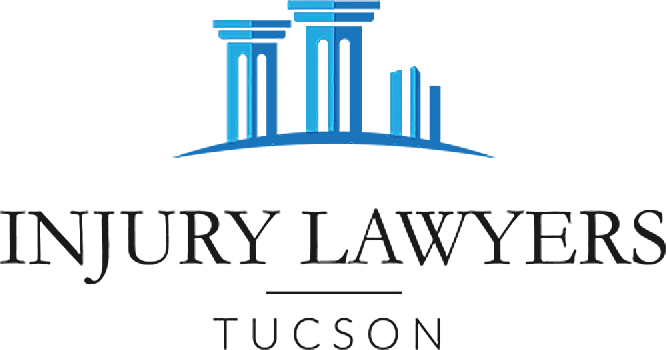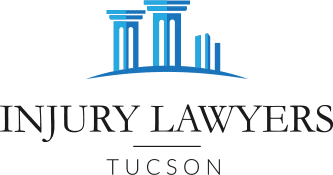Can I Still Bring a Personal Injury Claim In Pima Valley If I Have a Pre-Existing Condition?
There are countless reasons that you might need to bring a personal injury claim- you could’ve been injured in a car accident, slipped and fell in a public establishment, been attacked by someone’s dog, and so on. However, if you have a pre-existing injury or medical condition, it may seem like your accident only exacerbated your injuries rather than being their direct cause. You should know that having a pre-existing medical condition won’t disqualify you from collecting in a personal injury suit in the state of Arizona. A skilled personal injury attorney can help you make sure that the opposing party won’t use your pre-existing condition to reduce your injury award to an unfair sum. For your free consultation with one of our Tucson and Pima Valley injury lawyers, call 520-441-1450.

Arizona Jury Instructions For Pre-Existing Condition
When a plaintiff has a pre-existing medical condition, the Arizona bar has specific jury instructions available. They say that “[plaintiff] is not entitled to compensation for any physical or emotional condition that pre-existed the fault of [defendant]. However, if [plaintiff] had any pre-existing physical or emotional condition that was aggravated or made worse by [defendant]’s fault, you must decide the full amount of money that will reasonably and fairly compensate [plaintiff] for that aggravation or worsening.” Therefore, someone with a pre-existing condition is just as eligible as a healthy person to pursue a personal injury suit- as long as the defendant’s fault aggravated or worsened their pre-existing condition.
Should I Seek Medical Attention After An Accident With a Pre-Existing Condition?
Medical records documenting the plaintiff’s injury and medical treatments are a key component of any personal injury claim. They could be even more crucial if the plaintiff has pre-existing conditions. If the plaintiff doesn’t seek treatment after being injured in an accident, the only available medical records will be those from their previous medical condition(s). The opposing party can use this to whittle your claim down to next to nothing. Therefore, it’s vital that the plaintiff seek medical treatment, attend follow-ups and referrals by the doctor, take prescriptions, and follow any other advice that the doctor gives. This reduces the defendant’s opportunity to attribute injuries and damages to a pre-existing condition.
Potential Damages for Personal Injury Compensation
Even if the bulk of your damages are attributed to your pre-existing condition, it’s still important to recognize each way the aggravating injury has cost you physically, mentally, and financially. There are several damages that may be available for compensation, depending on your unique circumstances. You should discuss your situation with an attorney if you are unsure about which damages you have incurred or the amount you should demand from the opposing party.
Medical Bills- Current & Future
Most people are aware that you can be compensated for medical expenses in a personal injury claim. However, many fail to realize that you also need to calculate your anticipated future medical costs from the injury for your demand letter as well. Serious injuries could require regular medical care for the rest of the plaintiff’s life. But the plaintiff doesn’t have the rest of their life to bring a personal injury claim, and can’t come back to the opposing party for more medical funds after receiving the injury award. The statute of limitations, or the time limit for a plaintiff to file a lawsuit, for most personal injury claims is 2 years per A.R.S. § 12-542. The plaintiff will need to estimate any medical expenses that will be incurred after the statute of limitations has expired. This could require assistance from a variety of medical experts.
Current & Future Loss of Income
The more seriously someone is injured in an accident, the more time they usually have to spend away from work. Even if someone has paid time off accrued at work, they can be compensated in a personal injury claim for having to use that time. Calculating how much income someone has missed due to an accident can become much more complicated if the driver is self-employed or has sporadic income.
When injuries are particularly serious, they may impede a plaintiff’s long-term ability to succeed in their career path. The plaintiff can also be compensated for these financial losses in a personal injury claim. However, these damages are highly subject to interpretation, and the defense will do everything possible to reduce their liabilities for loss of earning potential. The plaintiff may need to retain professional experts to determine how much earning potential the accident caused the plaintiff to lose.
It’s important to note that many people don’t work for income, but their domestic contributions have financial value. For example, let’s say a stay-at-home mom and military wife is injured in a car accident. Her husband is deployed, her injuries have left her bedridden, and they have no family members nearby to come help out around the home and with the kids. It may take a nanny, housekeeper, meal delivery service, landscaper, and more to replace all of the wife’s contributions around the household. Therefore, just because someone is a homemaker doesn’t mean that they shouldn’t pursue compensation for the duties they are unable to perform due to the accident.
Pain & Suffering
An injury from a car accident could have few treatments available and therefore require few doctors’ appointments and medical expenses, but still leave the plaintiff with years of physical discomfort and struggle. Pain and suffering can often be the most substantial damage awarded in a personal injury claim, but it can also be the most subjective. This is especially true when the plaintiff has pre-existing medical conditions that are related to the injuries caused by the accident.
It is difficult to attribute a clear dollar value to pain and suffering. Different courts may accept different valuation methods, but one of the most commonly used is the multiplier method. To calculate pain and suffering damages using the multiplier method, the plaintiff must first sum up all of their economic damages from the accident. Second, that sum needs to be multiplied by a number that is usually between one and five. The more serious the injuries, the higher the multiplier. Other factors, like if the defendant was intoxicated, could also increase the multiplier. Here, the insurance company is likely to argue that the plaintiff’s pain and suffering are due to the pre-existing condition. A high-quality injury attorney can help stop that from happening.
Consider Our Pima Valley Law Firm for Your Personal Injury Needs
If you’ve been injured in an accident, the opposing party’s insurance company wants you to believe you can’t sue if you have a previous injury or medical condition. But if you’ve worked hard and made progress since your previous medical condition, you don’t deserve to have it all taken away by someone else’s carelessness. Our personal injury team is dedicated to helping clients in Tucson and across Pima Valley achieve fair outcomes in personal injury claims, regardless of the injuries they had before the accident. Our experienced staff and lawyers will deal with the insurance company and detailed aspects of your claim so you can dedicate your time to recovery. We have helped several clients in Tucson and across Pima Valley with every step of the personal injury claim process, from consultation to trial. Learn more about our firm and the answers to your questions about Arizona personal injury claims by calling 520-441-1450 to schedule your free consultation.

Injury Lawyers Tucson
2 East Congress St., Suite #900-6A
Tucson, AZ 85701
Phone: (520) 441-1450
Email: info@tucsoninjurylawyers.org
